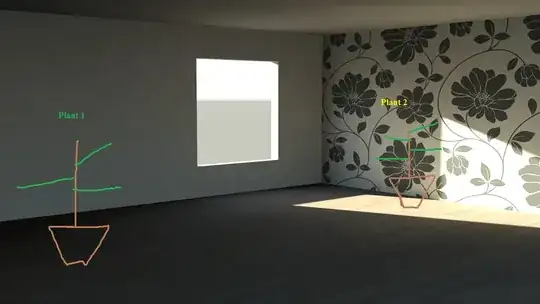With regard to plants, direct sunlight and daylight are two different things. Technically, all natural light is derived from the sun, but there are many plants which do not appreciate direct sunlight, preferring instead dappled sun, or partial shade, or indirect light with no direct sunlight at all.
Regarding houseplants, proximity to a window means more light, and there are differences in natural light requirements between different varieties of plant, even those described as not liking direct sunlight. An Aspidistra, for example, will be fine in very low light conditions, whereas many Dracaena varieties will do better closer to natural light.
If you're considering whether there are any plants you could grow in your room, there will be, but your choice may be more restricted if the ambient light is low, i.e., there's a tall building opposite and not far from your window, or a tree very close. Equally, a heat source like a radiator beneath your window will mean you can't put a plant very close or on the windowsill, but there will be something you can grow.
If you have no window, then you will need a growlight of some sort.
UPDATE:
I think your confusion is with terminology as much as anything - both plants in the image you've added are in indirect light, or shade conditions - the word 'direct' is usually applied to sunlight rather than just light. Plant 2 is in good light, plant 1 is in poor light, so plant 1 needs to be one that tolerates low light conditions.
